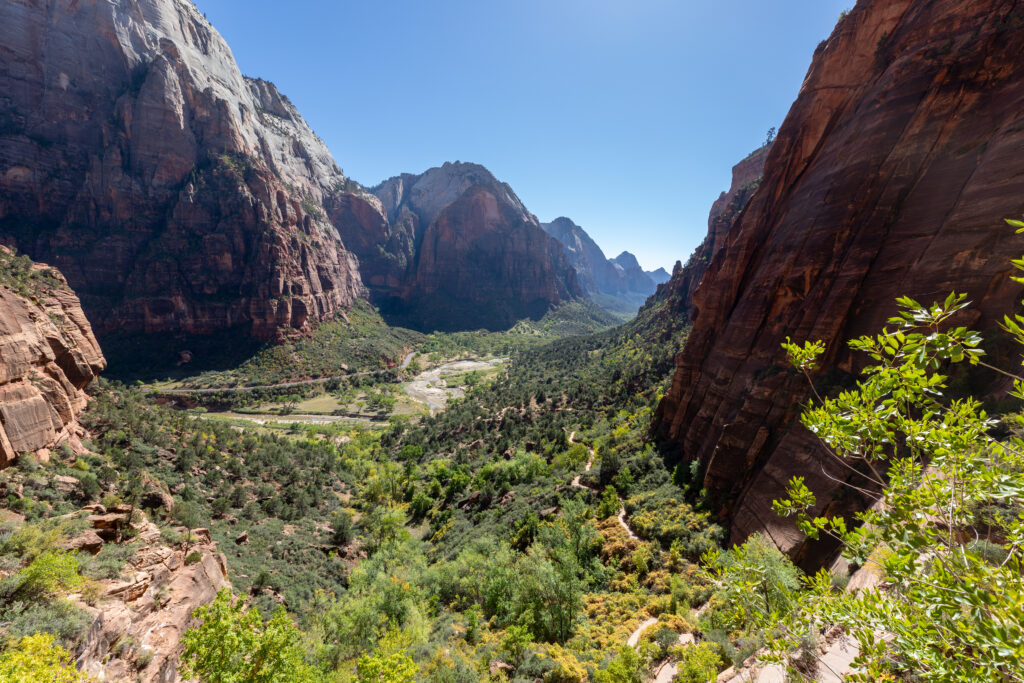Zion National Park is Utah’s first national park. It was granted national park status in 1919, after starting out as Mukuntuweap National Monument in 1909. “Mukuntuweap” is the Paiute Indian word for “straight canyon” or “straight river” .
The main focus of Zion National Park is Zion Canyon, which is 15 miles (24 km) long and up to 2,640 ft (800 m) deep. Zion’s canyon walls are reddish and tan-colored Navajo Sandstone eroded by the North Fork of the Virgin River. The canyon offers several well known hiking areas, including The Narrows and The Subway. Swimming is also permitted in this area of the Virgin River.
Zion National Park’s most well known hike is Angel’s Landing. Angel’s Landing towers nearly 1,500 feet (454 meters) above the valley floor, and includes a 5.4 mile round trip. In fact, the hike is so popular that it now requires a permit.
The Angel’s Landing trail shares most of it’s hike with the West Rim Trail to Scout Lookout. West Rim Trail to Scout Lookout is 3.6 miles round trip and finishes just short of the start of the final portion of the Angel’s Landing trail. You’ll likely see a Ranger checking for permits at the base of Angel’s Landing trail. The West Rim trail to Scout Lookout climbs more than 1,100 of the Landing’s vertical total, and offers amazing views of Angel’s Landing and the canyon below.
Before heading up towards Angel’s Landing, the West Rim Trail goes through two series of switchbacks. In between the switchbacks is a cool, shady canyon area known as Refrigerator Canyon. The second area of switchbacks is known as “Walter’s Wiggles”, a series of 21 short but steep switchbacks.








0 Comments